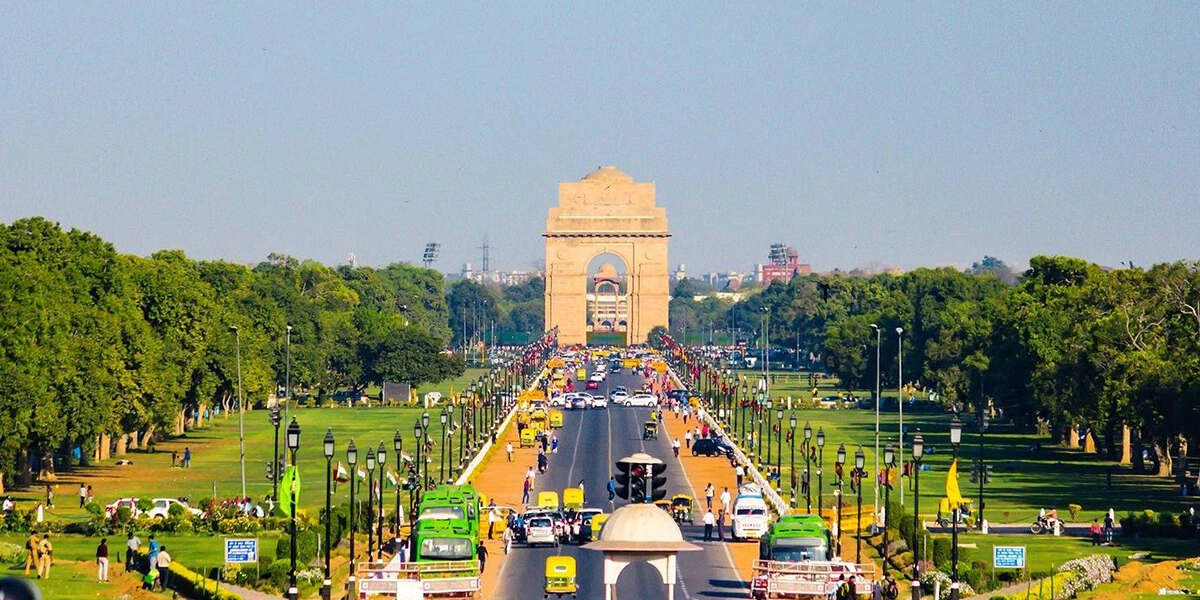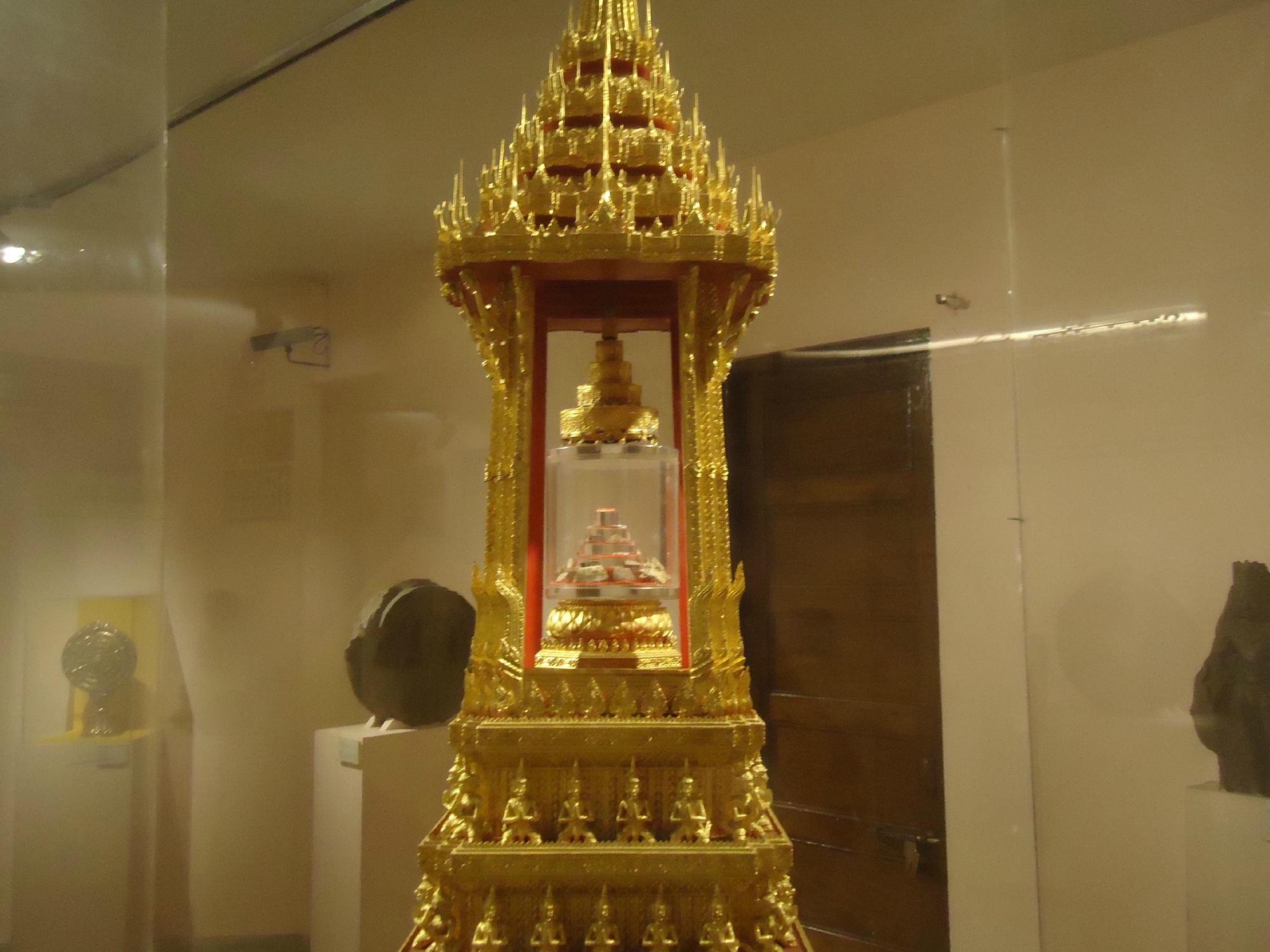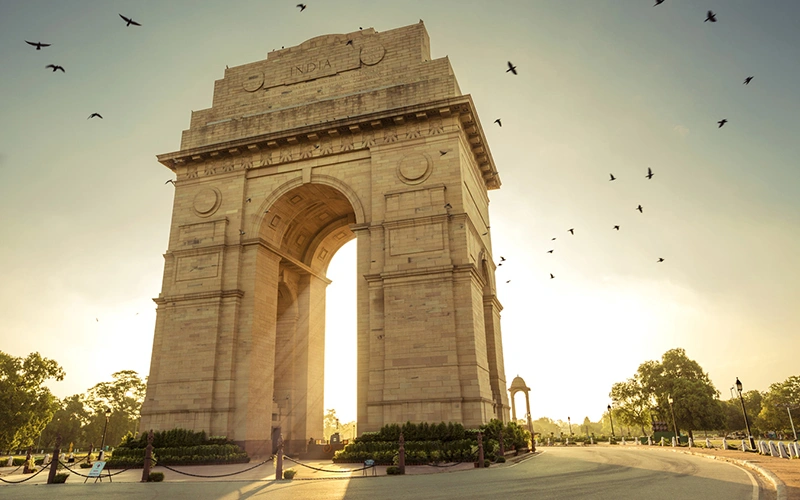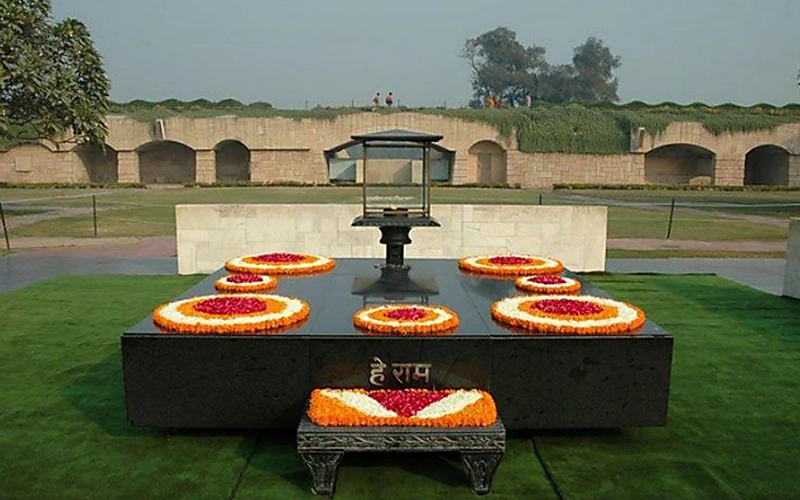National Museum
The National Museum in New Delhi preserves a collection of Buddha relics that holds historical and spiritual significance. These relics include artifacts, sculptures, and manuscripts related to the life and teachings of Siddhartha Gautama, the historical Buddha. Displayed within the museum’s exhibits, these relics offer a glimpse into the cultural and religious heritage associated with Buddhism. The National Museum serves as a key repository, contributing to the understanding and appreciation of Buddha’s legacy in India’s capital.
India gate
India Gate, completed in 1931, is a prominent war memorial in Delhi, originally known as the All India War Memorial. Designed by Sir Edwin Lutyens, it commemorates the soldiers of the Indian Army who sacrificed their lives in World War I. The memorial stands 42 meters tall and features the Amar Jawan Jyoti, an eternal flame symbolizing the immortal spirit of the Indian soldiers. The names of over 13,000 servicemen are inscribed on the monument. India Gate serves as a poignant symbol of sacrifice, patriotism, and national pride.
Gandhi Memorial/Raj Ghat
Raj Ghat in Delhi is a simple yet profoundly significant memorial dedicated to Mahatma Gandhi, the Father of the Nation. The memorial marks the spot where Gandhi was cremated following his assassination in 1948. The black marble platform, surrounded by serene gardens, symbolizes Gandhi’s timeless ideals of non-violence and truth. The word “Raj Ghat” is inscribed on the platform in Hindi. Visitors from around the world pay their respects at this tranquil site, making it a poignant reminder of Gandhi’s enduring legacy and his pivotal role in India’s struggle for independence.




